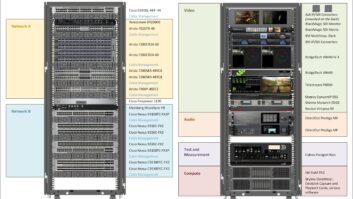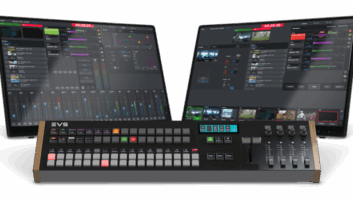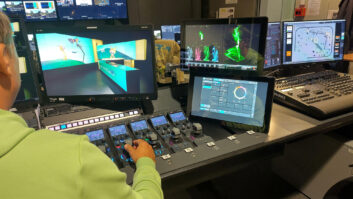IP, SMPTE ST 2110, 4K, UHD, remote production. These are tech terms that have headlined white papers and webinars across the electronic media industry for the last few years. What I want to talk about is real-world, practical applications that show these technologies are ready and relevant ― not a science project.
It was back in 2018 that Imagine Communications was the lead technology partner on two major ST 2110 UHD projects: the 24/7 production and broadcast centre for QVC Japan and the live production truck for tpc Switzerland.
While QVC and tpc are both forward-thinking media organisations, they embarked on these projects not simply because they were at the bleeding edge of technical development, but because they believed this new architecture was technically practical and made good business sense.
Three years of solid, consistent, reliable output later, what can we learn from the experience?
Scaling up and out
Today, the capability for UHD production – 4K and high dynamic range (HDR) – is expected at the top end. Major sports and cultural events, typical of the assignments for tpc’s truck, will be broadcast in 4K today and archived for future re-use. But UHD is extremely demanding of bandwidth: four times that required for HD (even more with High Frame Rate).
This need to scale up and out is one of the biggest drivers in the move to IP. We needed to find a way to handle 12 Gb/s signals without racks full of big-iron routers, tie-lines and distribution amplifiers. Outside broadcast engineers, in particular, cannot afford the additional weight in trucks that are always close to the limit.
SMPTE ST 2110 is the answer. With it, you can fit up to eight UHD streams on just one strand of single-mode fibre. And that fibre can carry the signal as far as 40 kilometres without the need to re-amplify.
That fibre can be routed in enterprise-class, off-the-shelf ethernet switches – capable today of hosting the equivalent of a 384 x 384 UHD router per rack unit. Double that if the edge devices are bidirectional.
This means much more than just reducing the size of the switch in the truck, vital though that is. It means you can put the cameras and the production equipment at a greater distance. Any distance, given access to the fibre.
And that means remote production – cameras at the venue, control room at the broadcaster’s base – is now perfectly feasible, without limiting technical or creative quality in any way. The director sees the pictures in real time; the video engineer tracks the cameras in real time; audio stays in sync with the video. The router and the production switcher act just as they always did: With smart systems engineering, the most complex system can sit under a single control panel.
Incidentally, some may try to tell you that IP is power hungry. Do not be fooled. A 512 x 512 SDI router will occupy at least 25 rack units and draw more than 9kW of power. A 2RU COTS switch will handle 768 x 768 UHD sources and destinations and draw only 3.6kW.
You may not need that much capacity now, but with a 100 gigabit ethernet switch scaling is simple. Scaling an SDI infrastructure will, sooner or later, require a significant investment in more hardware, rack space, power and air conditioning.
Proven in the real world
As our friends at tpc and QVC Japan have found over the last three years, ST 2110 and COTS technologies continue to prove themselves time and again. And we continue to put the valuable experience we gained in those pioneering ST 2110 deployments to good use in customer installations around the world.
For example, we recently provided Sinclair’s Tennis Channel with core infrastructure for a large-scale ST 2110 live production centre featuring a cloud-based environment for pop-up live events. This allowed Sinclair to spin up live channels around the 2021 Miami Open tennis tournament, marking the first time that any broadcaster had supported such a high-profile live sporting event via live real-time cloud playout. They used the same platform for coverage of the 2021 French Open from Roland Garros.
In short, IP systems built on COTS hardware and the recognised SMPTE ST 2110 standard are proven in challenging real-world environments. They guarantee performance today and seamless scalability for the future. And they’re definitely not a science project.






